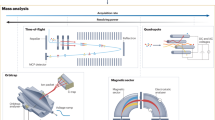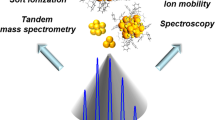Abstract
Material surfaces have unique structures and compositions that are strikingly different from the material itself. Atoms on the surface of a crystal are in an anisotropic condition markedly different from the situation experienced by the atoms in a bulk. The symmetry experienced by the individual surface atoms breaks down because of the fact that atoms at the surfaces are under-coordinated. The surface atoms have more energy compared to bulk atoms because the breaking of bonds occurs at the expense of energy. A surface as a natural interface between a material and its surroundings acts as a major counterpart in the interactions between them. Therefore, detailed characterizations of a surface are indispensable. Since the surface occupies a microscopic portion of a material, highly dedicated and specialized techniques are required to examine the surface region. Since the nanostructures hold the major fractions of surface atoms, physical and chemical properties of surfaces have important parts in describing the properties of nanomaterials. As the surface analysis provides a means to correlate the performance with surface composition and structure, it is used not only for the development of new surfaces with high functionality but also for helping materials exhibit their function properly. Amongst all existing analytical methods, “Secondary Ion Mass Spectrometry (SIMS)” provides an exclusive place in quantitative analyses of material surfaces and interfaces. Continuous development in the fundamental and technological aspects of SIMS has made this technique to be extremely sensitive and powerful. Secondary ion emission results predominantly from the sputtering of materials under ion bombardment and is a complex inelastic process of ion-surface interactions. Amongst existing models for explaining ionization probabilities for sputtered species, “electron tunnelling mechanism” has so far proven to have maximum acceptability for all materials. Intensity of secondary ions is directly coupled with “ionization efficiency”, which strongly depends on instantaneous local surface chemistry. This is the so-called “Matrix Effect”, that makes the SIMS technique challenging for quantitative analysis of materials despite the fact that the technique has the highest detection sensitivity (<ppb) and exceptional depth resolution (<1 nm). Thus, the quantification badly requires the compensation of the matrix effect. If an alkali atom (Li, Rb, K, Na, Cs, …etc. (referred to as ‘A’) comes to the proximity of the probing element (M) residing on the sample surface, this alkali ion can attach to a sputtered neutral atom (M0) and form a quasi-molecular (MA)+ ion. Such a molecular ion formation is strongly correlated to the atomic polarizability of the element M. Since M0 emission is completely independent of MA+ ion formation, the ‘matrix effect’ drastically decreases; a process similar to the ion formation in “secondary neutral mass spectrometry (SNMS)”. Although these (MA)+ molecular ions are the potential for materials analysis without “calibration standards”, they generally suffer from low yields. In that case, the (MA2)+ molecular ions often meet the requirement as their yields have been found higher by orders of magnitude compared to (MA)+ ions, thus offering a better detection sensitivity. Molecular ions are often monitored in standard SIMS experiments, especially to detect those ion species, which have poor dynamic ranges or are affected by mass interferences. For example, whilst making SIMS analysis of GaAs samples using Cs+ primary ions, (CAs)+ molecular ions are routinely monitored instead of C− ions in order to detect carbon as an impurity element, as carbon evolving from residual-gas species produces a high background in the mass spectra. Caesium is highly preferred for MCs+ or MCs2+ molecular ions in SIMS because of the strongest reactivity and electropositive nature of caesium. The present chapter deals with a comprehensive description of the ion emission phenomena in sputtering, the ‘matrix effect’ in SIMS and its compensation, and the potential applications of MCsn+-based molecular SIMS method for quantitative chemical analysis of materials. A special emphasis has been given to the quantification of low-dimensional materials, such as thin films, multilayers, superlattices, quantum structures, etc., using this advanced “MCsn+ -SIMS” (n = 1, 2, ….) approach in all complexities.
Access this chapter
Tax calculation will be finalised at checkout
Purchases are for personal use only
Similar content being viewed by others
References
Adachi, S.: J. Appl. Phys. 53, 8775–8792 (1982)
Almeida, J.M., Boyle, G., Leite, A.P., De La Rue, R.M., lronside, C.N., Caccavale, F., Chakraborty, P., Mansour, I.: J. Appl. Phys. 78, 2193–2197 (1995)
Andersen, C.A., Hinthorne, J.R.: Anal. Chem. 45, 1421–1438 (1973)
Baio, J.E., Graham, D.J., Castner, D.G.: Chem. Soc. Rev. 49, 3278–3296 (2020)
Bayan, S., Chakraborty, P.: Appl. Surf. Sci. 303, 233–240 (2014)
Bayan, S., Satpati, B., Chakraborty, P.: Surf. Interface Anal. 47, 37–44 (2014)
Bayan, S., Choudhury, B., Satpati, B., Chakraborty, P., Choudhury, A.: J. Appl. Phys. 117, 095304–095310 (2015)
Brison, J., Muramoto, S., Castner, D.G.: J. Phys. Chem. C 114, 5565–5573 (2010)
Brundle, C.R., Evans, C.A., Wilson, S.: In: Brundle, C.R., Evans, C.A., Wilson, S. (eds.) Encyclopaedia of Materials Characterization. Butterworth-Heinemann, MA, USA (1992)
Caccavale, F., Chakraborty, P., Quaranta, A., Mansour, I., Gianello, G., Bosso, S., Corsini, R., Mussi, G.: J. Appl. Phys. 78, 5345–5350 (1995a)
Caccavale, F., Chakraborty, P., Capobianco, A., Gianelio, G., Mansour, I.: J. Appl. Phys. 78, 187–193 (1995b)
Canteri, R., Moro, L., Anderle, M.: In: Benninghoven, A. (ed.) Proceedings of SIMS VIII. Wiley, NY, USA (1991)
Chakraborty, P.: Dynamic secondary ion mass spectrometry. In: Chakraborty, P. (ed.) Ion Beam Analysis of Surfaces and Interfaces of Condensed Matter Systems (Chap 7), pp. 217–265. Nova Science Inc., New York (USA) (2002)
Choudhury, B., Borah, B., Choudhury, A.: Photochem. Photobio. 88, 257–264 (2011)
Choudhury, B., Bayan, S., Choudhury, A., Chakraborty, P.: J. Colloid Interface Sci. 465, 1–10 (2016)
Courjal, N., Bernal, M.P., Caspar, A., Ulliac, G., Bassignot, F., Manuel, L.G., Suarez, M.: Lithium niobate optical waveguides and microwaveguides. In: You, K.Y. (ed.) Emerging Waveguide Technology, pp. 153–175. Intech Open (2018)
Davies, J.A.: High energy density collision cascades and spike effects. In: Williams, J.S., Poate, J.M. (eds) Ion Implantation and Beam Processing, pp. 81–97 (Chap 4). Elsevier Inc. Amsterdam (1984)
Devi, L.G., Kavitha, R.: Appl. Catal. B Environ. 140, 559–587 (2013)
Escarra, M.D., Thongrattanasiri, S., Charles, W.O., Hoffman, A.J., Podolskiy, V.A., Claire, G.: Opt. Express 19, 14990–14998 (2011)
Gao, Y.: J. Appl. Phys. 64, 3760 (1988)
Gao, Y., Marie, Y., Saldi, F., Migeon, H.N.: Int. J. Mass Spectrom Ion Proc. 11–18 (1995)
Gavelle, M., Bazizi, E.M., Scheid, E., Armand, C.: Mater. Sci. Eng. B 154, 110–113 (2008)
Gnaser, H.: Surf. Sci. 342, 319–326 (1995)
Gnaser, H., Oechsner, H.: Surf. Sci. 302, L289–L292 (1994a)
Gnaser, H., Oechsner, H.: Surf. Interface Anal. 21, 257–260 (1994b)
Gnaser, H., Orendorz, A., Ziegler, C., Rowlett, E.: Appl. Surf. Sci. 252, 6996–6999 (2006)
Gnaser, H.: Low-energy ion irradiation of solid surfaces (Springer Tracts in Modern Physics, vol. 146). Springer, Berlin, Germany (1999)
Haag, M., Gnaser, H., Oechsner, H.: Fresenius J. Anal. Chem. 353, 565–569 (1995)
Harrison, D.E., Levy, N.S., Johnson, J.P., Effron, H.M.: Appl. Phys. 39, 3742–3761 (1968)
Havelund, R., Seah, M.P., Tiddia, M., Gilmore, I.S.: J. Am. Soc. Mass Spectrom. 29, 774–785 (2018)
Hoffman, A.J., Sridhar, A., Braun, P.X., Alekseyev, L., Howard, S.S., Franz, K.J., Cheng, L., Choa, F.S., Sivco, D.L., Podolskiy, V.A., Narimanov, E.E., Gmachl, C.: J. Appl. Phys. 105, 122411–122417 (2009)
Hofmann, S.: Appl. Surf. Sci. 70–71, 9–19 (1993)
Hofmann, S.: Surf. Interface Anal. 21, 673–678 (1994)
Holliger, P., Laugier, F., Dupuy, J.C.: Surf. Interface Anal. 34, 472–476 (2002)
https://www.hidenanalytical.com/applications/surface-analysis/contamination-with-silicone/
Marie, Y., Gao, Y., Saldi, F., Migeon, H.N.: Surf. Interface Anal. 23, 38–43 (1995)
Marseilhan, D., Barnes, J.P., Fillot, F., Hartmann, J.M., Holliger, P.: Appl. Surf. Sci. 255, 1412–1414 (2008a)
Marseilhan, D., Barnes, J.P., Fillot, F., Hartmann, J.M., Holliger, P.: Appl. Surf. Sci. 255, 1412 (2008)
Mei, H., Laws, T.S., Terlier, T., Verduzco, R., Stein, G.E.: J. Polym. Sci. 60, 1174–1198 (2022)
Mondal, S., Gnaser, H., Chakraborty, P.: Eur. Phys. J. D 66, 197–203 (2012)
Mootz, T., Adriaens, A., Adams, F.: Int. J. Mass Spectrom. Ion Process. 156, 1–10 (1996)
Noël, C., Tuccitto, N., Busby, Y., Berger, M.A., Licciardello, A., List-Kratochvil, E.J.W., Houssiau, L.: ACS Appl. Polym. Mater. 1, 1821–1828 (2019)
Oechsner, H., Gerhard, W.: Phys. Lett. A 40, 211–212 (1972)
Otomo, S., Maruya, H., Seo, S., Iwase, F.: Appl. Surf. Sci. 252, 7275–7278 (2006)
Priebe, A., Xie, T., Bürki, G., Pethö, L., Michler, J.: J. Anal. Spectrom. 35, 1156–1166 (2020)
Prudon, G., Gautier, B., Dupuy, J.C., Dubois, C., Bonneau, M., Delmas, J., Vallard, J.P., Bremond, G., Brenier, R.: Thin Solid Films 294, 54–59 (1997)
Saha, B., Chakraborty, P.: Nucl. Instrum. Methods Phys. Res. B 258, 218–225 (2007)
Saha, B., Chakraborty, P.: Energy Proc. 41, 80–109 (2013)
Saha, B., Sarkar, S., Chakraborty, P., Gnaser, H.: Surf. Sci. 602, 1061–1065 (2008)
Saha, B., Chakraborty, P., Gnaser, H., Sharma, M., Sanyal, M.K.: Appl. Phys. A 108, 671–677 (2012)
Sarkar, S., Chakraborty, P., Gnaser, H.: Phys. Rev. B 70, 195427–195431 (2004)
Sarkar, S., Datta, A., Chakraborty, P.: J. Mater. Res. 20, 2639–2646 (2005)
Sarkar, S., Chakraborty, P., Sanyal, M.K., Caccavale, F., Arora, B.M.: Surf. Interface Anal. 29, 659–662 (2000)
Schenkel, T.: Surface analysis of slow, highly-charged ions like Au69+: TOF-SIMS and the probing of nano-environments. In: Chakraborty Purushottam (ed) Ion Beam Analysis of Surfaces and Interfaces of Condensed Matter Systems (Chap 8). Nova Science Inc., New York (USA), pp. 267–310 (2002)
Sharma, M., Sanyal, M.K., Mukhopadhyay, M., Bera, M., Saha, B., Chakraborty, P.: J. Appl. Phys. 110, 102204–102208 (2011)
Shea, M.P., Havelund, R., Gilmore, I.S.: J. Phys. Chem. C 120(46), 26328–26335 (2016)
Shelby, R.A., Smith, D.R., Schultz, S.: Science 292, 77–79 (2001)
Slodzian, G.: Phys. Scripta T6, 54–66 (1983)
Thompson, M.W.: Phil. Trans. r. Soc. Lond. A 362, 5–28 (2004)
Van der Weg, W.F., Rol, P.K.: Nucl. Instrum. Meth. 38, 274–276 (1965)
Vickerman, J.C.: Static secondary ion mass spectrometry. In: Walls, J.M. (ed.) Methods of Surface Analysis, pp. 169–215. Cambridge University Press, Cambridge (1989)
Warren, B.E.: X-ray Diffraction. Addison Wesley Publishing Company Inc., Reading, Massachusetts (USA) (1969)
Williams, P.: Surf. Sci. 90, 588–634 (1979)
Winograd: Annu. Rev. Anal. Chem. 11, 29–48 (2018)
Wittmaack, K.: Surf. Sci. 429, 84–101 (1999)
Wittmaack, K.: Surf. Sci. Rep. 68, 108–230 (2013)
Yu, M.L.: In: Benninghoven, A. (ed) Proceedings of SIMS VI, Wiley, NY, USA (1987)
Yu, M.L.: Charged and excited states of sputtered atoms. In: Behrisch, R., Wittmaack, K. (eds.) Sputtering by Particle Bombardment III, pp. 91–160. Springer-Verlag, Berlin (1991)
Yu, M.L., Mann, K.: Phys. Rev. Lett. 57, 1476–1479 (1986)
Zener, C.: Proc Roy Soc A 137, 696–702 (1932)
Author information
Authors and Affiliations
Corresponding author
Editor information
Editors and Affiliations
Rights and permissions
Copyright information
© 2024 The Author(s), under exclusive license to Springer Nature Singapore Pte Ltd.
About this chapter
Cite this chapter
Chakraborty, P. (2024). High-Resolution Molecular Secondary Ion Mass Spectrometry for Absolute Quantification of Materials in Low-Dimensional Structures: Foundation, Perception and Challenges. In: Ningthoujam, R.S., Tyagi, A.K. (eds) Handbook of Materials Science, Volume 1. Indian Institute of Metals Series. Springer, Singapore. https://doi.org/10.1007/978-981-99-7145-9_21
Download citation
DOI: https://doi.org/10.1007/978-981-99-7145-9_21
Published:
Publisher Name: Springer, Singapore
Print ISBN: 978-981-99-7144-2
Online ISBN: 978-981-99-7145-9
eBook Packages: Chemistry and Materials ScienceChemistry and Material Science (R0)




